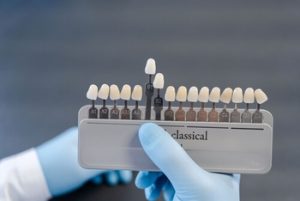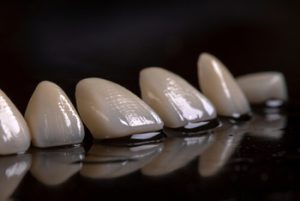A dental crown procedure might sound daunting, but it’s a straightforward and effective way to restore your oral health and regain your teeth’ natural function and appearance. Whether you’re dealing with a broken tooth, tooth decay, or a missing tooth, dental crowns provide a reliable solution. Let’s dive into this process, explore why you might need a crown, and what to expect every step of the way.
What Is a Dental Crown?
A dental crown is a custom-made cap that covers a damaged tooth or dental implant, restoring its shape, size, and strength. Crowns are designed to integrate seamlessly with your natural teeth, ensuring a natural appearance while protecting the tooth structure underneath.
They come in various materials, including:
- Porcelain crowns for a natural tooth colour.
- Metal crowns are often made from gold or stainless steel.
- Porcelain fused to metal (PFM) crowns that combine aesthetics with durability.
- Zirconia crowns are known for their strength and appearance.
Why You Might Need a Dental Crown
Your dentist may recommend getting a dental crown if you have:
- A weak tooth due to decay or cracks.
- A broken tooth that cannot be repaired with a filling.
- A treated tooth following a root canal treatment.
- A tooth’s location that requires additional protection or function.
- A dental implant needs a crown placement.
- Teeth that need restoration to enhance oral health and natural appearance.
Step-by-Step: The Dental Crown Procedure
Understanding the dental crown procedure can ease any apprehensions you might have and give you a clear idea of what to expect. Let’s simplify the process into clear, easy-to-follow steps:
Initial Consultation and Assessment
The journey begins with a visit to your dental clinic for an evaluation by a dental professional. Here’s what typically happens:
- Examination: Your dentist will evaluate the affected tooth, nearby teeth, and gums to identify any signs of damage, decay, or infection.
- X-Rays: Detailed imaging is taken to evaluate the roots and tooth structure, ensuring the tooth is strong enough to support a crown.
- Treatment Plan: If issues like severe tooth decay or gum disease are found, these will be treated before proceeding with the crown.
Tooth Preparation
Once your dentist determines you need a dental crown, the following step is to prepare the tooth. This is a critical part of the process and includes:
- Cleaning: Removing decay and damaged areas of the tooth.
- Shaping: The tooth structure is filed down to ensure there’s enough space for the new crown. In cases of severe damage, your dentist might apply filling material to reinforce the tooth and provide additional support.
- Impressions: Your dentist will take an impression or digital scan of the prepared tooth and adjacent teeth. This ensures the custom crown fits perfectly with your bite.
Temporary Crown Placement
A temporary crown will be placed while you wait for your permanent dental crown to be fabricated. This serves to:
- Protect the prepared tooth from damage and tooth sensitivity.
- Maintain the space between adjacent teeth.
- Allow you to eat and speak comfortably.
Temporary crowns are typically made from less durable materials like resin or acrylic and secured with temporary dental cement.
Crown Fabrication
Your custom crown is crafted in a dental laboratory or, in some cases, at the clinic itself if same-day crowns are available. Using your tooth impressions, the lab creates a crown tailored to:
- Match your natural tooth colour for seamless blending.
- Ensure durability, whether it’s an all-porcelain crown, zirconia crown, or porcelain fused to metal crown.
This step can take 1-2 weeks, during which your temporary crown will keep the prepared tooth protected.
Permanent Crown Placement
Once your final crown is ready, you’ll return for the crown placement appointment. Here’s what happens:
- Temporary Crown Removal: The temporary crown is gently removed, and the tooth is cleaned.
- Fitting: The dentist will position the permanent crown over the prepared tooth to evaluate its fit, alignment, and appearance, making any necessary adjustments for optimal comfort and functionality.
- Securing the Crown: Once everything is properly aligned, the crown is securely fixed and put in place with strong dental cement.
Follow-Up and Aftercare
After the procedure, it’s important to follow your dentist’s instructions for proper dental crown care. Regular follow-ups ensure that:
- The crown placement remains secure.
- Your crowned tooth and surrounding teeth are in good condition.
- Any potential issues, like a loose crown or sensitivity, are addressed promptly.
Different Ways the Dental Crown Procedure Can Be Tailored for You
Some cases may require additional steps depending on your specific needs:
- Root Canal Treatment: If the tooth has significant decay or infection, a root canal treatment may be performed before placing the crown.
- Dental Implants: For a missing tooth, a crown is placed atop a dental implant rather than a natural tooth.
- Weakened Teeth: Teeth with insufficient structure may need extra preparation or reinforcement to support the crown.
By understanding each step, you can approach the dental crown procedure with confidence, knowing your smile is in expert hands!
Dental Crowns: Why They’re the Secret to a Healthier, Happier Smile
Dental crowns aren’t just about fixing teeth—they’re about transforming smiles, protecting your oral health, and restoring confidence. Here’s a look at why dental crowns are such a popular choice for dental restoration:
Restores Damaged Teeth to Their Best
Whether it’s a broken tooth, a weakened tooth, or decayed teeth, crowns work wonders by restoring the tooth’s shape, size, and strength. They help bring damaged teeth back to life, allowing you to chew, bite, and speak naturally.
Keeps Weakened Teeth Safe and Sound
A crowned tooth acts like a protective shield, safeguarding it from further wear, cracks, or decay. This is especially important for teeth that have undergone a root canal treatment or those with large fillings.
A Natural Look That’s Undetectable
Modern dental crown materials like porcelain crowns, ceramic crowns, and zirconia crowns mimic the colour and translucency of natural teeth. No one will know you’ve had dental work—they’ll just notice your radiant smile!
Versatility for a Variety of Dental Needs
Crowns are incredibly versatile and can manage a wide range of dental issues, including:
- Covering a dental implant for a missing tooth.
- Supporting a tooth with insufficient tooth structure.
- Restoring a treated tooth after a root canal.
Long-Lasting and Durable Solutions
With proper dental crown care, crowns can last for 10-15 years or more. Materials like metal crowns or porcelain fused to metal (PFM) crowns offer exceptional durability, making them a reliable long-term investment.
Saves Surrounding Teeth from Trouble
A well-placed crown supports adjacent teeth, ensuring they stay aligned and functional. It also helps prevent further damage or shifting of surrounding teeth.
Protects Against Tooth Sensitivity
Teeth that have lost significant enamel can become sensitive to hot, cold, or sweet foods. A crown acts as a barrier, reducing tooth sensitivity and restoring comfort.
Boosts Confidence with a Perfect Smile
A custom crown is crafted to integrate flawlessly with your smile, enhancing your overall appearance and self-esteem. Whether you’re dealing with a broken tooth or a misshaped one, crowns can make your smile picture-perfect.
Improves Overall Oral Health
By protecting your teeth and maintaining the alignment of your bite, crowns contribute to better oral health. They also make it easier to chew and clean your teeth effectively, minimising the risk of gum disease or further decay.
How to Keep Your Dental Crown Looking and Feeling Its Best

- Brush with fluoride toothpaste twice daily.
- Floss to protect adjacent teeth and gums.
- Refrain from chewing hard foods on the crowned tooth.
- Schedule regular dental check-ups and cleanings.
If you experience a loose crown, tooth sensitivity, or other issues, contact your dentist promptly for an evaluation.
Exploring the Different Types of Dental Crowns
When it comes to dental crowns, the material you choose can make a big difference in durability, aesthetics, and functionality. Let’s explore the most common types of crowns and their unique benefits to help you decide which one is best for your needs.
All-Porcelain Crowns: The Most Natural Look
All-porcelain crowns, crafted entirely from ceramic material, are a popular option for restoring visible teeth.
Benefits:
- Mimic the natural tooth colour and translucency.
- Ideal for people with metal allergies.
- Provide a natural, seamless appearance.
Best For:
Front teeth or areas where aesthetics are a priority.
Porcelain Fused to Metal (PFM) Crowns: Strength Meets Aesthetics
Porcelain fused to metal crowns combine a metal base for strength with a porcelain coating for a natural appearance.
Benefits:
- Durable and strong, it is ideal for chewing and grinding.
- Provides a balance of strength and aesthetics.
- Blends well with natural teeth, especially when the porcelain layer matches your natural tooth colour.
Best For:
Back teeth or cases where both durability and appearance are important.
Metal Crowns: Built for Longevity
Metal crowns are made from alloys like gold and platinum or base metals like stainless steel.
Benefits:
- Extremely durable and resistant to chipping or breaking.
- Require minimal removal of tooth structure.
- Long-lasting with proper care.
Best For:
Molars or teeth that are not visible in the smile line.
Zirconia Crowns: The Ultimate All-Rounder
Zirconia crowns are made from zirconium dioxide, a strong and biocompatible material.
Benefits:
- Extremely strong and resistant to wear.
- It can be colour-matched for a natural appearance.
- Less likely to cause allergies or sensitivities.
Best For:
Back teeth are also a great option for visible teeth due to their strength and aesthetics.
Ceramic Crowns: Versatile and Aesthetic
Ceramic crowns are similar to porcelain but offer greater strength, making them versatile for various dental needs.
Benefits:
- Highly aesthetic and natural-looking.
- Durable enough for both front and back teeth.
- Ideal for people with metal allergies.
Best For:
Patients seek both durability and a natural look.
Temporary Crowns: A Short-Term Solution
Temporary crowns, typically made from resin or acrylic, protect the prepared tooth while the permanent crown is being fabricated.
Benefits:
- Protects the prepared tooth from damage or tooth sensitivity.
- Maintains alignment and function while waiting for the custom crown.
Best For:
Short-term use between dental appointments.
Stainless Steel Crowns: Reliable for Specific Needs
Stainless steel crowns are pre-fabricated and often used as a temporary measure or for children.
Benefits:
- Affordable and easy to place.
- Commonly used for primary teeth in children to prevent further decay.
Best For:
Children or temporary solutions for adults.
How Long Do Dental Crowns Last?
The lifespan of a crown depends on its material and your oral hygiene habits:
- All porcelain crowns and ceramic crowns: 10-15 years.
- Porcelain fused to metal (PFM) crowns: 10-20 years.
- Metal crowns: Up to 25 years.
With proper dental crown care and regular dental visits, your crown can last even longer.
Common Questions About Dental Crowns
How Long Does the Dental Crown Procedure Take?
The process typically involves two visits:
- First Visit: Your tooth is prepared, impressions are taken, and a temporary crown is placed.
- Second Visit (1–2 weeks later): Your permanent dental crown is fitted and cemented.
Does Getting a Dental Crown Hurt?
The procedure is carried out under local anaesthesia, ensuring you feel comfortable during tooth preparation or crown placement. You may experience minor sensitivity afterwards, but it’s temporary.
Can Dental Crowns Be Whitened?
No, dental crowns cannot be whitened because they are made from materials like porcelain, ceramic, or metal that do not respond to whitening treatments. If the colour of your crown no longer matches your teeth, you may need to replace it to restore a uniform appearance.
Can I Eat Normally with a Crown?
Yes, once the permanent crown is in place. However, while wearing a temporary crown, it’s best to limit sticky or hard foods to prevent dislodging it.
Can Children Get Dental Crowns?
Yes, children may require stainless steel crowns for baby teeth to protect them from further decay or damage. These crowns are durable, cost-effective, and often used for temporary solutions until the permanent teeth emerge.
What Happens If My Crown Feels Loose?
A loose crown can occur due to wear or damage. It’s important to contact your dentist immediately to prevent harm to the tooth underneath or surrounding teeth.
Can a Crown Fix a Broken Tooth?
Yes! Crowns are an ideal solution for restoring a broken tooth, protecting it from further damage while restoring its function and appearance.
Can You Get a Crown on a Tooth That’s Cracked?
Yes, a crown is often the best solution for a cracked tooth. It covers and protects the tooth, preventing the crack from spreading and restoring its functionality. If the crack extends below the gum line, your dentist may recommend additional treatments before placing the crown.
Are Crowns Resistant to Staining?
Most dental crowns, especially those made from porcelain or zirconia, are highly resistant to staining. However, the natural teeth around the crown can stain, creating a mismatch in colour over time. Regular dental cleanings and avoiding staining foods like coffee or wine can help maintain a uniform appearance.

An ill-fitting crown can cause discomfort, difficulty chewing, or irritation to the surrounding teeth and gums. If your crown feels too high, too tight, or uncomfortable, notify your dentist immediately. They can adjust the crown for a better fit or, in some cases, create a new crown if adjustments aren’t sufficient.
When to Visit Your Dentist
If you notice any issues with your crown or have concerns about decayed teeth, damaged teeth, or other dental problems, don’t delay. Regular dental check-ups are essential for maintaining your crown and overall dental health.
Ready to Restore Your Smile?
Whether you need a crown for a weakened tooth, missing tooth, or damaged tooth, the dental crown placement process is a reliable solution to enhance your smile and protect your teeth. Contact Infinity Dental Care at (02) 9159 6237 to learn more about your options for achieving a healthy, radiant smile.
Note: Any surgical or invasive procedure carries risks. Before proceeding, you should seek a second opinion from an appropriately qualified health practitioner.
References
Cleveland Clinic. (n.d.). Dental impressions. Retrieved from https://my.clevelandclinic.org/health/diagnostics/22671-dental-impressions
WebMD. (n.d.). What to know about temporary dental crowns. Retrieved from https://www.webmd.com/oral-health/what-to-know-about-temporary-dental-crown
Medical News Today. (n.d.). What to know about root canal treatment. Retrieved from https://www.medicalnewstoday.com/articles/142780
Mayo Clinic. (n.d.). Dental implant surgery. Retrieved from https://www.mayoclinic.org/tests-procedures/dental-implant-surgery/about/pac-20384622
Johns Hopkins Medicine. (n.d.). Sensitive teeth. Retrieved from https://www.hopkinsmedicine.org/health/conditions-and-diseases/sensitive-teeth#:~:text=Tooth%20sensitivity%2C%20also%20known%20as,or%20even%20brushing%20and%20flossing.


